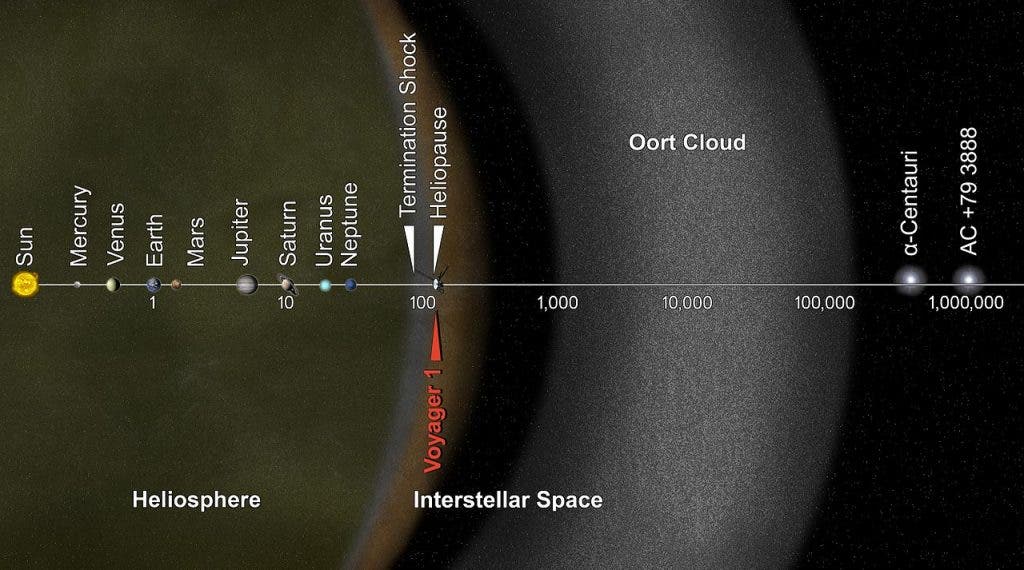The Oort Cloud, the most distant region of our solar system, was discovered by Jan Hendrik Oort. It is a giant structure composed of billions (if not trillions) of relatively small icy and rocky objects, and unlike the rest of our solar system (which is flat like a disc), it is believed that the Oort Cloud is spherical.
Now, astronomers from the Leiden Observatory produced the first simulation to display the formation and early evolution of the cloud.

The theories that tried to describe the Oort cloud evolution are scattered and hard to reconcile. Some focus more on the formation, others are more concerned with the relation with the Sun’s position within our galaxy. The Leiden team connected different parts of those theories and simulated the development of the cloud over one billion years.
To get to the origins of the Oort cloud, we need to get to the origins of our solar system. The solar system started in a messy dusty fog suspended around the Sun. The planets and everything in the solar system formed by coagulating everything gravitationally around 4.5 billion years ago. That is an important part of the story, because if formed too early or too late, the Oort cloud couldn’t be formed. The best scenario is the one in which the Sun escapes its star cluster just in the best moment to avoid losing too many objects, thus allowing the formation of the Oort cloud.
Other crucial events needed to take place to enable the formation of the structure. Multiple encounters with passing stars and Milky Way tidal gravitational effects all played a role, helping the Oort cloud take shape some 100 million years after the Sun had escaped its star cluster.
These processes can party be seen in the below animation. In the animation, the Sun is orbiting the galactic center, passing near a sea of asteroids which are ejected by hypothetical planets from other systems, resulting in the Oort cloud.
The opposite process can also happen though — too many interactions with other systems and the galaxy can cause the loss of many objects, which would then end up in interstellar space. That’s also the possible origin of the free-floating Oumuamua that caused quite a lot of stir as it passed by our solar system.
Asteroids from the conveyor belt can also pass through the orbit of the giant planets, Jupiter, Saturn, Uranus, Neptune. These objects are placed in an irregular orbit and they can have a periodic relationship with Jupiter and Saturn, called orbital resonance. The resonance creates a chaotic environment for them, and some are kicked to a different orbit.
However, the gas giants could not have contributed much to the formation of the Oort cloud. The study has shown that their ejection timescale is much too short to contribute significantly.
Another important takeaway from the study is the simulation of a single asteroid life. The scientists depicted the evolution of an asteroid that had a resonance interaction with Jupiter. Due to this resonance, its orbit is successively altered for 2 million years. You can see the timescale increasing significantly and also the shocking increase of distance from Neptune’s orbit (in red).
In the end, asteroids from the conveyor belt by the giants alongside complex interactions with tidal forces from our galaxy helped form the Oort cloud. The same phenomenon caused the reentry of 0.2 to 0.6 objects a year. Moreover, the Sun’s orbit near a sea of Oort cloud from neighbouring stars may have caused the kidnapping of many objects, such as Sedna.
The original study can be found in the preprint for Astronomy & Astrophysics. Concerned about environmental impacts, the authors added the energy consumption to produce such a long simulation: “This results in about 2MWh of electricity http://green-algorithms.org/), consumed by the Dutch National supercomputer.”


